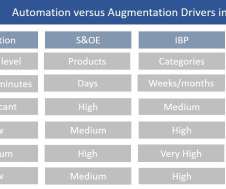4 Key Trends Reshaping Manufacturing Procurement in 2024
Arkestro
JANUARY 9, 2024
According to Deloitte, the manufacturing industry was in contraction throughout most of 2023 due to challenges like increased lead times, tight labor markets, and rising costs. Another report found that 50% of respondents are investing in AI to improve employees’ use of time and allow for more high-value work.











Let's personalize your content